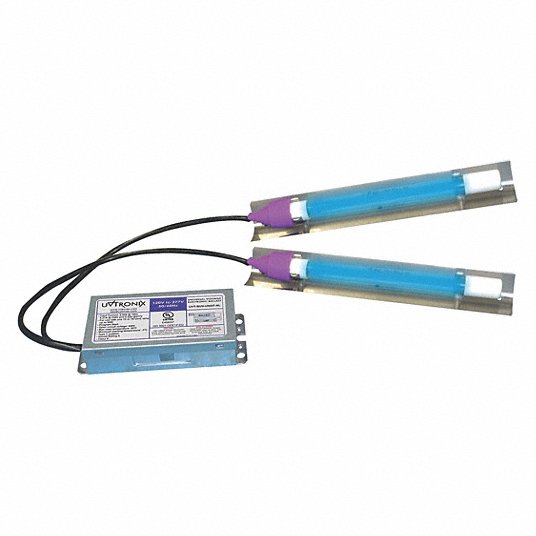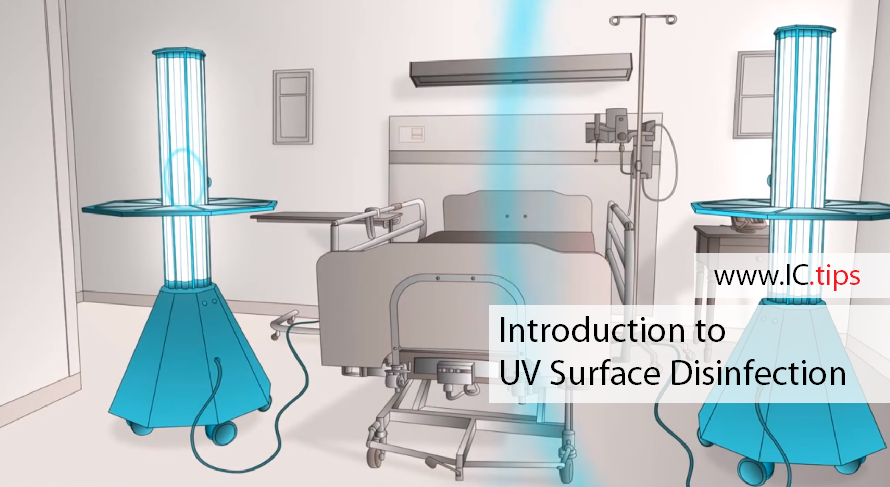Transforming Sanitation Criteria: The Function of UV Surface Disinfection in Health and Safety
Transforming Sanitation Criteria: The Function of UV Surface Disinfection in Health and Safety
Blog Article
Using the Prospective of UV Sanitation: Safeguarding Wellness and Health
UV disinfection, an innovation extensively utilized in various markets, has actually verified reliable in getting rid of dangerous virus. From recognizing the mechanisms at play to applying this modern technology in our daily lives, this discussion aims to shed light on the capacity of UV disinfection and its role in protecting our health and wellness and health.
Understanding UV Sanitation
UV disinfection is an extremely reliable and extensively made use of approach for making sure and getting rid of unsafe pathogens wellness and hygiene. This technique makes use of ultraviolet (UV) light to suspend microorganisms by damaging their DNA and preventing them from duplicating. UV sanitation is particularly effective against germs, viruses, and various other bacteria that can cause infections and diseases.
The principle behind UV sanitation is easy yet powerful. UV sanitation can be applied in numerous setups, consisting of water treatment plants, health care centers, food processing sectors, and air filtration systems.
One of the advantages of UV sanitation is its capability to successfully and effectively eliminate a variety of microorganisms without the demand for ingredients or chemicals. Unlike various other sanitation approaches, such as chlorine or ozone, UV disinfection does not introduce unsafe spin-offs or chemical deposits right into the atmosphere. Furthermore, UV sanitation is a non-contact process, which suggests that it does not require physical call with the microorganisms, decreasing the danger of cross-contamination.

The Scientific Research Behind UV Sanitation
The effectiveness of UV disinfection depends on its capability to disrupt the hereditary material of microorganisms, providing them not able to reproduce and therefore removing their harmful capacity. UV, or ultraviolet, radiation is a form of electro-magnetic radiation with wavelengths much shorter than noticeable light. It is classified right into three kinds: UV-A, uv-c, and uv-b. UV-C radiation, especially, has the quickest wavelength and the highest power. Due to the fact that it can permeate the cell wall surfaces of bacteria and damage their DNA or RNA., this high-energy UV-C radiation is most reliable in sanitation applications.
When microorganisms are revealed to UV-C radiation, the power is absorbed by their hereditary product, causing bonds to damage and forming chain reactions that interrupt their capacity to reproduce. This avoids the microbes from replicating and spreading out infection. UV disinfection is specifically reliable versus germs, fungis, and viruses, consisting of common virus such as Escherichia coli, Salmonella, and Influenza.
The science behind UV disinfection is sustained by considerable research study and researches. It has been revealed that exposure to an enough dosage of UV-C radiation can accomplish a high level of sanitation, typically exceeding 99.9% efficiency in killing bacteria. It is important to keep in mind that the performance of UV disinfection depends on numerous aspects, including the intensity of UV-C radiation, exposure time, distance from the UV resource, and the vulnerability of the microbe to UV radiation (uv surface disinfection).
Applications of UV Disinfection
Given the substantial research and efficiency of UV disinfection in interfering with the genetic material of bacteria, it is essential to check out the different useful applications of this technology. UV sanitation has verified to be a valuable device in a wide variety of industries where preserving a tidy and safe setting is necessary.
One significant application of UV disinfection remains in medical care settings. UV light can be utilized to disinfect surface areas, tools, and even the air in medical facilities and clinical centers. This assists to decrease the danger of healthcare-associated infections and makes sure a much safer setting for individuals and healthcare workers.
Another essential application is in the food and beverage market. UV sanitation is utilized to deal with water and remove damaging virus, such as E. coli and Salmonella, from the production process. uv surface disinfection. This ensures the safety and security and top quality of the items we eat
UV Click Here sanitation is additionally widely made use of in water treatment plants and wastewater therapy facilities. It is a reliable method for damaging harmful microorganisms, viruses, and bloodsuckers that can be existing in water resources. This aids to supply tidy and safe alcohol consumption water to areas and safeguard the environment from pollution.
Additionally, UV sanitation is employed in the pharmaceutical sector to decontaminate tools and keep the honesty of products. It is also used in research laboratories and research facilities to avoid contamination and ensure exact outcomes.
Advantages of UV Disinfection Innovation
One remarkable advantage of using UV sanitation innovation is its capacity to successfully remove microorganisms without the use of extreme chemicals. This is specifically useful in various setups, such as healthcare facilities, water treatment plants, and food handling industries, where the visibility of harmful virus presents a considerable threat to public wellness and safety and security.
Unlike conventional sanitation methods that rely upon chemicals like chlorine or ozone, UV sanitation technology utilizes ultraviolet light to target and ruin the DNA of microorganisms, successfully counteracting their ability to reproduce and create read this post here infections. This process not only removes the need for possibly harmful chemicals but also lowers the threat of chemical deposit or results continuing to be in the cured environment.

Additionally, UV sanitation technology is eco-friendly. As it does not depend on making use of chemicals, it eliminates the requirement for their production, disposal, and transport, lowering the total carbon impact related to disinfection processes. In addition, UV disinfection systems have a longer life expectancy compared to chemical-based approaches, causing less constant substitute and additional reducing waste.
Implementing UV Sanitation in Every Day Life
To successfully execute UV disinfection in life, companies and people can incorporate portable UV sanitizing gadgets into their hygiene routines and cleansing methods. These gadgets are designed to emit ultraviolet light, which has actually been confirmed to eliminate or inactivate a wide variety of microorganisms, consisting of fungis, viruses, and germs. By utilizing mobile UV disinfecting gadgets, individuals can sanitize frequently touched things and surfaces, such as mobile phone, laptop computers, tricks, and doorknobs, minimizing the threat of spreading bacteria and infections.
Along with incorporating mobile UV sanitizing devices, it is very important to comply with appropriate standards and recommendations for reliable UV disinfection. This includes making certain that the tool is made use of appropriately and for the suggested duration to attain optimal sanitation results. It is also important to prioritize precaution, such as putting on safety glasses and avoiding direct exposure of the UV light to the skin.

Additionally, organizations can carry out UV sanitation technology in different setups to improve health methods. Healthcare facilities and health care centers can utilize UV sanitation robotics to sanitize client rooms, operating theaters, and other high-touch locations. Food processing sectors can incorporate UV disinfection systems right into their manufacturing lines to improve food safety and security and stop contamination.
Conclusion
In conclusion, UV disinfection technology holds terrific prospective in protecting health and health. With its numerous benefits, UV disinfection is an important device for preserving a healthy and balanced and tidy setting.
Unlike various other sanitation methods, such as chlorine or ozone, UV sanitation does not introduce harmful byproducts or chemical deposits into the environment. It is important to note that the performance of UV sanitation depends on different variables, consisting of the intensity of UV-C radiation, exposure time, distance from the UV source, and the sensitivity of website link the microorganism to UV radiation.
One more benefit of UV sanitation innovation is its capacity to offer rapid and constant disinfection. Unlike handbook cleansing techniques, which can be lengthy and require substantial labor, UV disinfection systems can be automated and run continuously, guaranteeing consistent sanitation without human treatment.To successfully implement UV disinfection in everyday life, companies and individuals can integrate mobile UV sterilizing gadgets into their health routines and cleansing practices.
Report this page